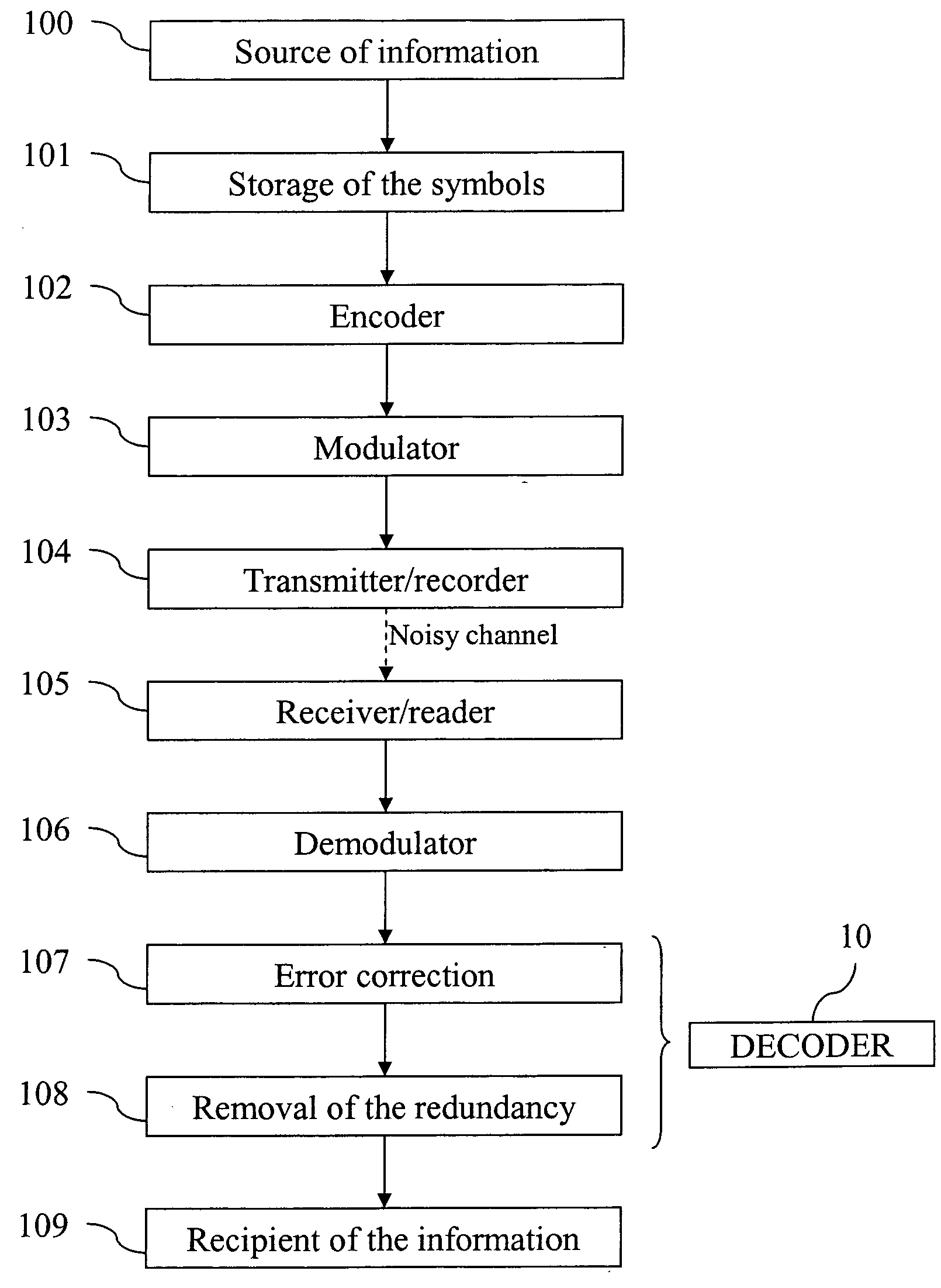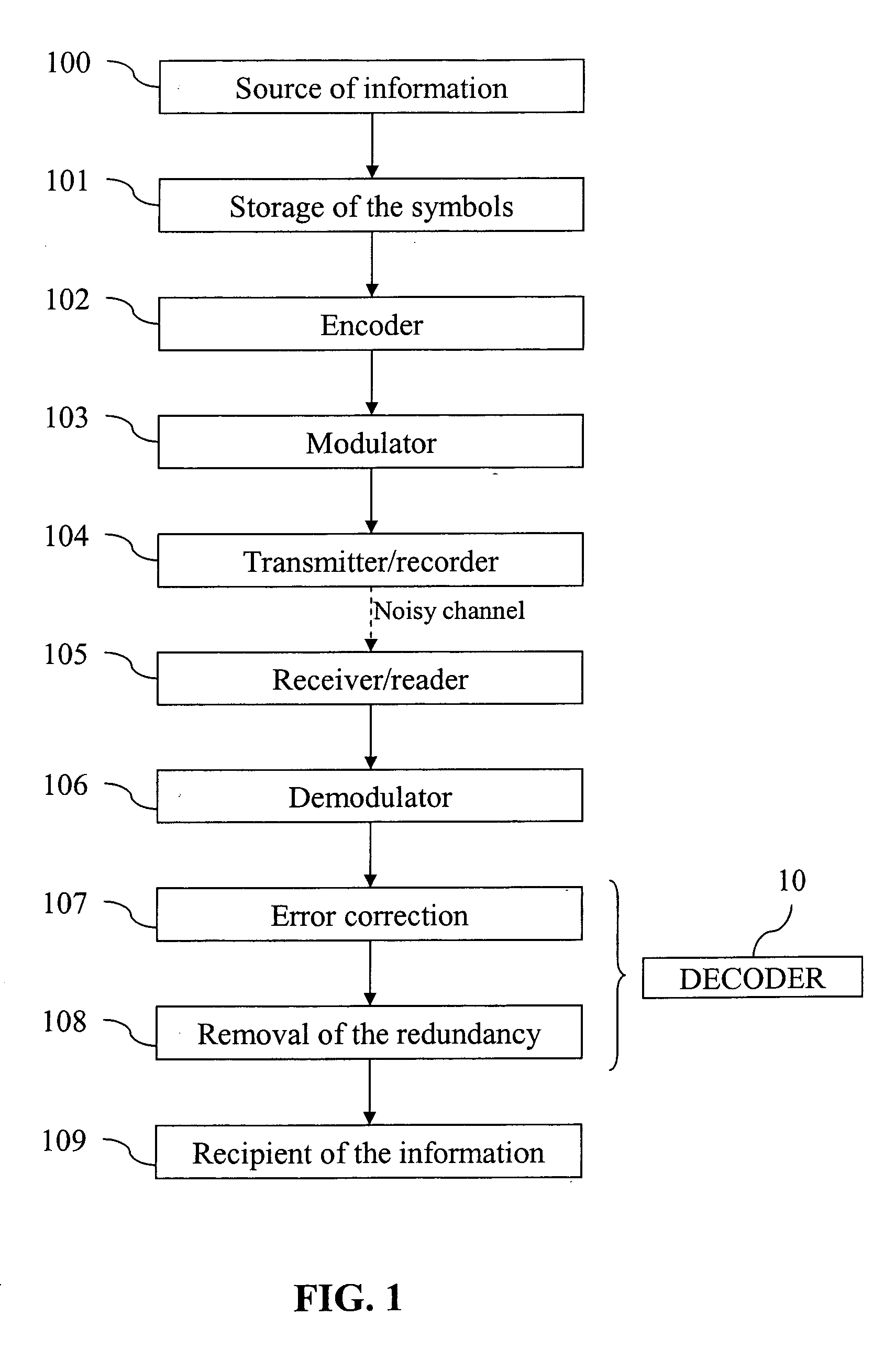Decoding for algebraic geometric code associated with a fiber product
a technology of algebraic geometric codes and fiber products, applied in the field of decoding methods, can solve problems such as transmission errors, difficult to develop decoding algorithms, and high number of information symbols that may be rendered unreadabl
- Summary
- Abstract
- Description
- Claims
- Application Information
AI Technical Summary
Benefits of technology
Problems solved by technology
Method used
Image
Examples
Embodiment Construction
[0064]FIG. 1 is a block diagram of a system for transmitting information using a channel encoding and decoding according to the invention.
[0065] The function of this system is to transmit information of any nature from a source 100 to a recipient or user 109. First of all, the source 100 puts this information into the form of symbols belonging to a certain alphabet (for example bytes), and transmits these symbols to a storage unit 101, which accumulates the symbols so as to form sets each containing k symbols. Next, each of these sets is transmitted by the storage unit 101 to an encoder 102 which incorporates the redundancy therein, so as to construct a codeword of length n belonging to the chosen code.
[0066] The codewords so formed are next transmitted to a modulator 103, which associates a modulation symbol (for example, a complex amplitude) with each symbol of the codeword. Next, these modulation symbols are transmitted to a transmitter or to a recorder 104, which inserts the s...
PUM
 Login to View More
Login to View More Abstract
Description
Claims
Application Information
 Login to View More
Login to View More - R&D
- Intellectual Property
- Life Sciences
- Materials
- Tech Scout
- Unparalleled Data Quality
- Higher Quality Content
- 60% Fewer Hallucinations
Browse by: Latest US Patents, China's latest patents, Technical Efficacy Thesaurus, Application Domain, Technology Topic, Popular Technical Reports.
© 2025 PatSnap. All rights reserved.Legal|Privacy policy|Modern Slavery Act Transparency Statement|Sitemap|About US| Contact US: help@patsnap.com



